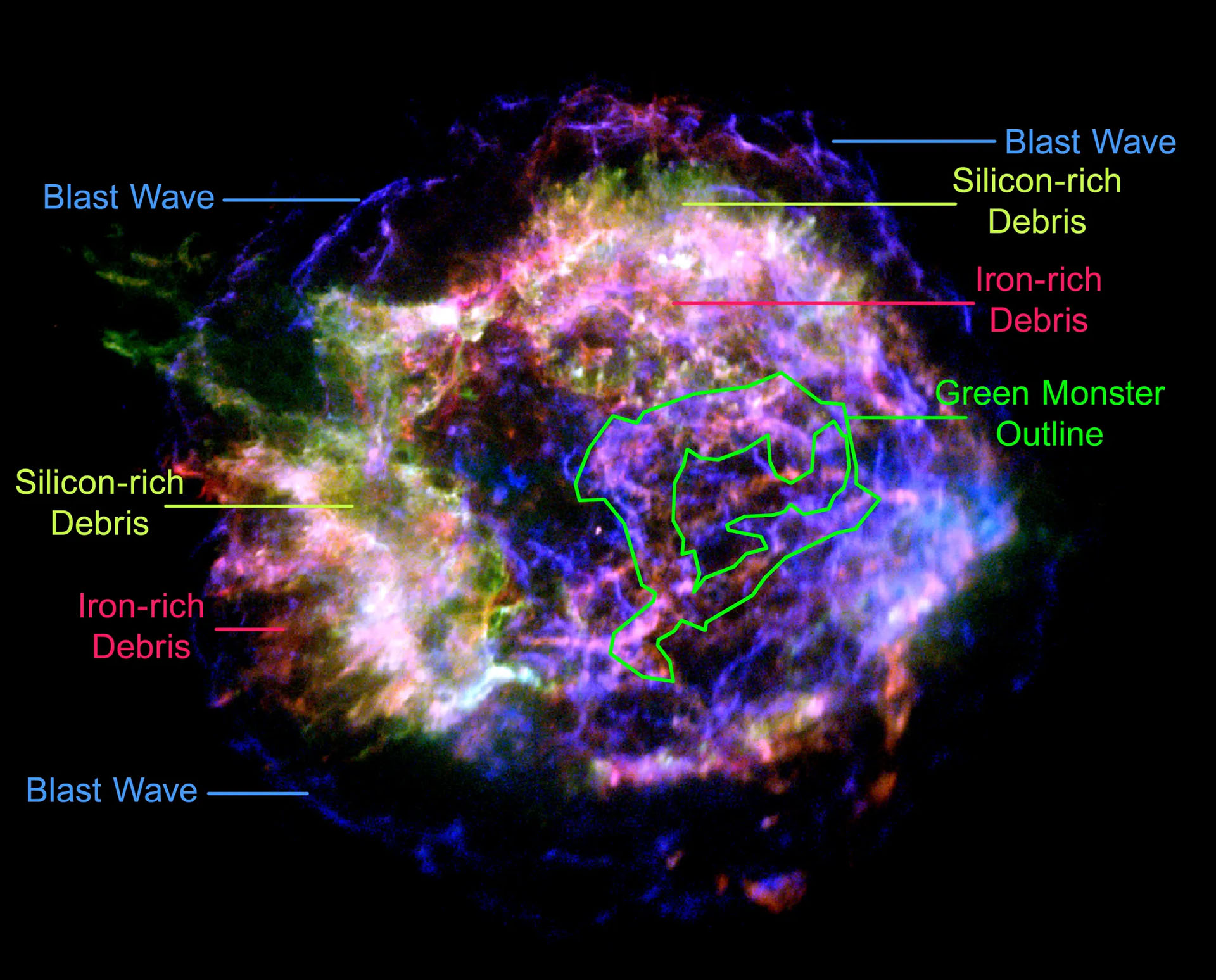Cassiopeia A’s ‘Green Monster’ on display in new images
Combined data from NASA’s Chandra X-ray Observatory and the James Webb Space Telescope have given us a unique look at Cassiopeia A (Cas A). This is the first time astronomers have combined data from the two telescopes to study this well-known supernova, which has proven exceptionally helpful.
One of the main reasons astronomers wanted to combine data from Chandra and James Webb was to help look at Cas A’s unique debris, called the “Green Monster.” This “monster” of debris rests near the center of the supernova and was first discovered by Webb in April 2023.
This combined research of Cassiopeia A has also helped astronomers better understand the explosion that created the supernova remnant roughly 240 years ago, at least from Earth’s perspective.
All that data is brought together into a stunning and vivid image showcasing the supernova’s outer parts. Altogether, the data used to make the image includes red, green, and blue coloring for Webb’s data, blue coloring for Chandra’s data, and red and white for data taken from Hubble.
Data from NASA’s iconic Spitzer space telescope is also highlighted in red, green, and blue, and the outline of the Green Monster has even been highlighted in one of the images, too, to help viewers get a better idea of what astronomers are talking about.
Learning more about Cas A and what happened to this star over three hundred years ago can help astronomers understand supernovas and the long-term remnants that they leave behind. Detailed analysis of this data also provides new insight into Cas A’s current makeup, which astronomers are undoubtedly excited to dig into even more.
While each of these observatories is powerful in its own right, by combining the data from each of them into one dataset, we can get a deeper look at the big picture of our universe.
Combined data from NASA’s Chandra X-ray Observatory and the James Webb Space Telescope have given us a unique look at Cassiopeia A (Cas A). This is the first time astronomers have combined data from the two telescopes to study this well-known supernova, which has proven exceptionally helpful.
One of the main reasons astronomers wanted to combine data from Chandra and James Webb was to help look at Cas A’s unique debris, called the “Green Monster.” This “monster” of debris rests near the center of the supernova and was first discovered by Webb in April 2023.

This combined research of Cassiopeia A has also helped astronomers better understand the explosion that created the supernova remnant roughly 240 years ago, at least from Earth’s perspective.
All that data is brought together into a stunning and vivid image showcasing the supernova’s outer parts. Altogether, the data used to make the image includes red, green, and blue coloring for Webb’s data, blue coloring for Chandra’s data, and red and white for data taken from Hubble.
Data from NASA’s iconic Spitzer space telescope is also highlighted in red, green, and blue, and the outline of the Green Monster has even been highlighted in one of the images, too, to help viewers get a better idea of what astronomers are talking about.
Learning more about Cas A and what happened to this star over three hundred years ago can help astronomers understand supernovas and the long-term remnants that they leave behind. Detailed analysis of this data also provides new insight into Cas A’s current makeup, which astronomers are undoubtedly excited to dig into even more.
While each of these observatories is powerful in its own right, by combining the data from each of them into one dataset, we can get a deeper look at the big picture of our universe.
